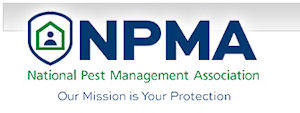Researchers from the George Washington University, in cooperation with Brazilian biologists, recently identified a new ant species in the Brazilian savanna region. The research, published in the October 2014 issue of the scholarly journal The American Naturalist*, highlights the discovery of an ant that’s able to parasitize colonies of the turtle ant, Crematogaster ampla, an extremely aggressive ant species related to acrobat ants in North America. Typically, turtle ant workers attack and drive away all competing ant species from its foraging territories. The newly identified species, however — Cephalotes specularis, or the mirror turtle ant — is able to invade colonies of C. ampla by outsmarting its host. Through its close physical resemblance to the host species and its unique behavioral adaptations, invading workers carefully avoid visual detection and physical contact with the aggressive host ants.
What lessons can a novel ant species practicing social parasitism in Brazil teach pest management professionals (PMPs) about managing structure-invading ants?
1. Happy trails. The parasitic ants in this study were extremely effective at following the host ant’s foraging trails to uncover food sources. An effective PMP takes advantage of trails in the same way. By following ant trails in an account, PMPs can learn a good deal about the pest ant and how to control it.
Following the ants to their food source provides direct evidence for the client about sanitation concerns. Few strategies are as effective as showing customers the forgotten peanut butter-and-jelly sandwich that’s fallen behind the couch and is covered in ants. Conversely, following the ants in the opposite direction will lead the observant PMP to the nest, which can then be treated.
2. Imitation is more than flattery. Through baiting, PMPs can attempt to mimic the food on which the ants are feeding.
Based on the needs of the colony, ants will forage for foods with varying nutritional attributes. Often, early in the season, many ants are interested in protein-rich foods to fuel the growth of larvae in the colony. Toward the end of the summer, when ant colonies are at their largest population levels, carbohydrate-rich foods are often preferred. Identifying which foods a colony is eating at the time of the service, and mimicking the food choices of the colony with baits, can lead to better acceptance and quicker control.
* Reference: Powell, S., K. Del-Claro, R.M. Feitosa, and C. R. F. Brandão. 2014. “Mimicry and Eavesdropping Enable a New Form of Social Parasitism in Ants.” The American Naturalist 184(4) pp. 500-509.
You can reach Dr. Fredericks, chief entomologist and VP of technical and regulatory affairs for the National Pest Management Association (NPMA), at jfredericks@pestworld.org.

Leave A Comment